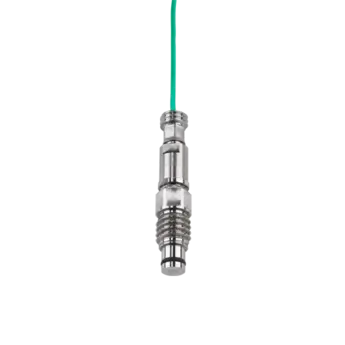Sensores de presión de la cavidad, medición directa (ø4 mm, 200 bar) / 6165A

6165A
Estos sensores piezoeléctricos de presión de la cavidad son adecuados para compuestos reticulantes de baja viscosidad.
Características/ventajas principales
- Rango de presión: 0 ... 200 bar
- Cable intercambiable
- Resistente a la penetración de resina gracias al diseño de diafragma soldado
- Para uso industrial durante la incrustación de chips y placas de circuitos (moldeo por transferencia)
- Sensor de Alta sensibilidad alojado en un cartucho sellado
El Tipo 6165A es un sensor de alta sensibilidad con un diafragma frontal de 2,5 mm soldado en un robusto cartucho de 4 mm de diámetro. Este diseño de hueco anular soldado impide la entrada de resinas de baja viscosidad y garantiza así una señal de alta calidad sin distorsión. Los cables son intercambiables para facilitar su cambio y reparación. La presión actúa directamente sobre la parte delantera del diafragma y, a su vez, se transmite al elemento de medición, que emite una carga eléctrica proporcional a la presión. Ésta es convertida por un amplificador en una tensión que oscila entre 0 ... 10 V y, a continuación, está disponible en la salida del amplificador. El sensor está disponible en dos diseños de cable. El diseño coaxial utiliza cables de alto aislamiento que no necesitan tenderse en el molde. El práctico diseño unifilar se basa en un cable que puede cortarse a cualquier longitud. El conector con tecnología de corte y agarre puede conectarse al instalarse en el molde. Esto facilita la instalación y el mantenimiento.
Carga
Carga
